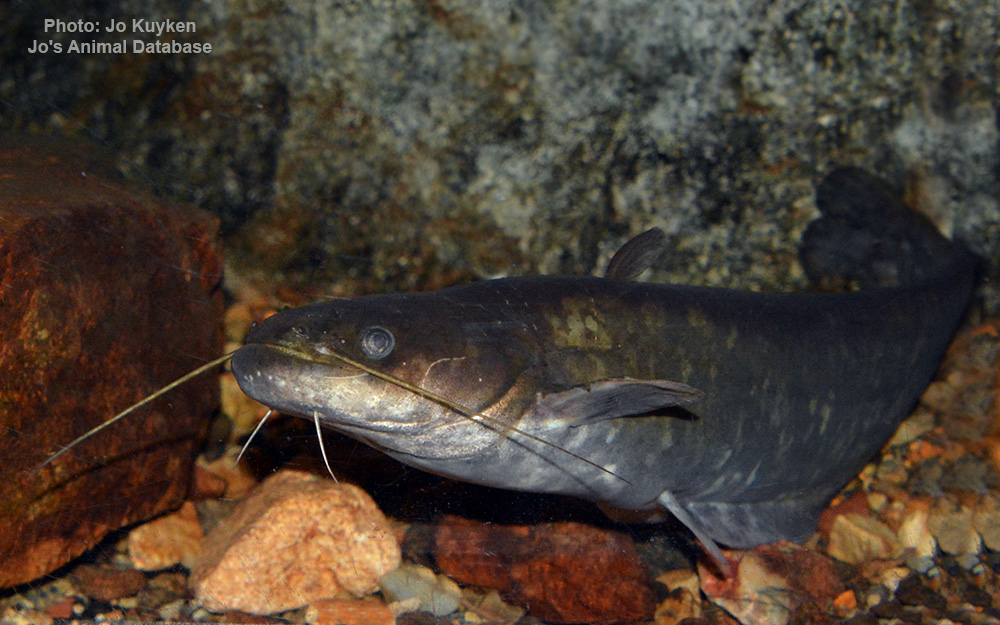Tomoda’s catfish
(Silurus tomodai)

Image source: Jo's Animal Database
Classification
General data
A new catfish, Silurus tomodai, is described based on 37 specimens collected from streams of Mie, Aichi, Gifu, Shizuoka and Nagano prefectures of central Honshu Island, Japan.
Although S. tomodai is closely related to S. lithophilus (Tomoda, 1961) based on partial mitochondrial DNA sequences, the former can be distinguished from the latter by the position of dorsal fin (predorsal-fin length 28.5–32.1% vs. 30.1–33.7% SL), a shorter head (18.5–21.2% vs. 19.5–22.2% SL) that is more broadly rounded in ventral view, a more slender body (depth at 10th anal-fin ray 12.9–18.3% vs. 15.7–18.8% SL, and 86.8–100.3% vs. 97.2–109.7% of body depth at anal-fin origin), longer mandibular barbel [20.4–47.7% vs. 10.7–35.3% of head length (HL)], shorter anal-fin rays (10th anal-fin ray length 32.2–38.3% vs. 37.3–45.3% HL), eye slightly protruding laterally beyond profile in dorsal view, and the shape of medial depression on anterior face of mesethmoid (deep and narrow vs. shallow and wide).
Silurus tomodai differs from S. asotus, a species widely distributed in Japan including central Honshu Island, in the shape of vomerine-tooth band (typically separated into two distinct lenticular patches vs. continuous), the shape and size of teeth (small and slightly recurved vs. relatively large and recurved), snout length (34.7–38.9% vs. 33.0–36.5% HL), the length of lower jaw (110–124% vs. 124–138% of snout length), interorbital width (53.0–61.3% vs. 46.3–52.8% HL), eye location (vertical through anterior margin of pupil usually posterior vs. anterior terminus of lips), inter-mandibular barbel width (24.7–32.5% vs. 21.7–26.7% HL), vertebral count (62–65 vs. 58–63), pigmentation on underside of head (usually mottled with dark pigmentation vs. uniformly white, rarely dark with pale band along posteroventral margin of lower jaw) and eggs yellow (vs. light green).










